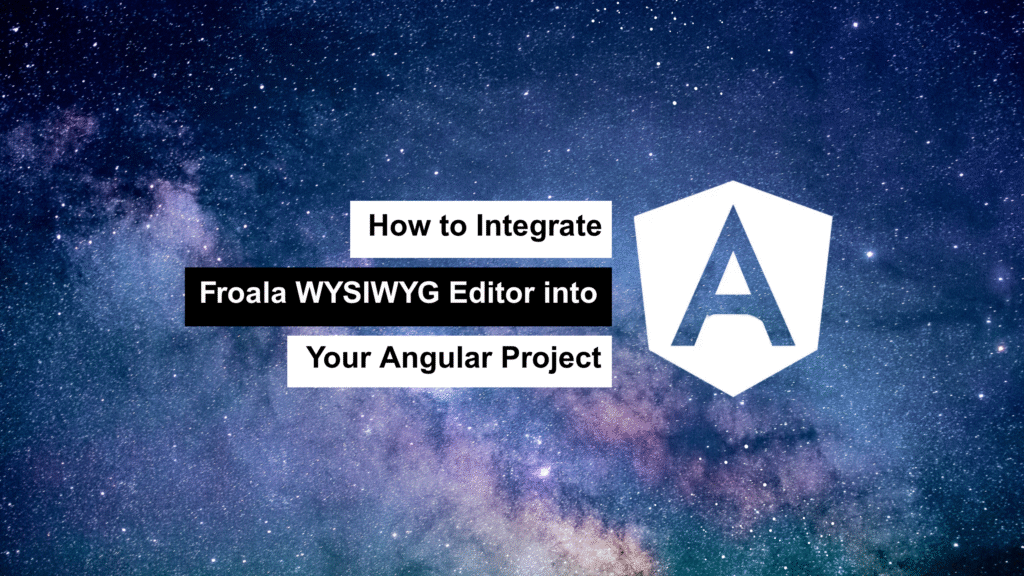
If you’re looking to add a rich text editor to your Angular app without the bulk or complexity, Froala Editor is a sleek, lightweight option worth checking out. In this quick guide, I’ll walk you through how to set it up, customize it, and bind it to your data using Angular.
🧩 Step 1: Install Froala Editor + Angular Wrapper
First things first—install Froala and its Angular integration:
npm install angular-froala-wysiwyg froala-editor --save
🎨 Step 2: Include Froala CSS & JS in angular.json
For Froala to work properly, you’ll need to include its styles and scripts:
Open angular.json and add these lines:
"styles": [
"node_modules/froala-editor/css/froala_editor.pkgd.min.css",
"node_modules/froala-editor/css/froala_style.min.css"
],
"scripts": [
"node_modules/jquery/dist/jquery.min.js",
"node_modules/froala-editor/js/froala_editor.pkgd.min.js"
]
🛠️ Step 3: Import Froala Module in App Module
In app.module.ts, bring in the Froala module and enable FormsModule for two-way binding:
import { BrowserModule } from '@angular/platform-browser';
import { NgModule } from '@angular/core';
import { FormsModule } from '@angular/forms';
import { AppComponent } from './app.component';
import { FroalaEditorModule } from 'angular-froala-wysiwyg';
@NgModule({
declarations: [AppComponent],
imports: [
BrowserModule,
FormsModule,
FroalaEditorModule.forRoot()
],
bootstrap: [AppComponent]
})
export class AppModule { }
✏️ Step 4: Add Froala Editor to a Component
Now that Froala is wired up, let’s use it in a component.
In app.component.html, add:
<div [froalaEditor] [(ngModel)]="editorContent"></div>
And in your app.component.ts:
tsCopyEditexport class AppComponent {
editorContent: string = '<p>Start editing with Froala!</p>';
}
🎛️ Step 5: Customize the Editor
Want to tweak the toolbar or disable certain features? Just pass in an editorOptions object:
<div [froalaEditor]="editorOptions" [(ngModel)]="editorContent"></div>
editorOptions: Object = {
toolbarButtons: ['bold', 'italic', 'underline', 'paragraphFormat'],
quickInsertTags: []
};
You can modify everything from buttons to behavior—Froala is very flexible.
📡 Step 6: Handling Content Changes
Need to react to content updates? Use Froala’s event binding:
<div [froalaEditor]="editorOptions" (froalaModelChange)="onContentChange($event)"></div>
onContentChange(content: string) {
console.log('Editor content updated:', content);
}
Perfect for autosave or live previews.
🧪 Step 7: Run & Test It!
Spin up your Angular app:
ng serve
Open the browser and check out your shiny new rich-text editor. Froala should be fully functional and beautifully styled out of the box.
💡 Final Thoughts
Froala + Angular = 🔥.
If you’re building anything that requires text editing—like blogs, CMS dashboards, or comment sections—Froala is one of the smoothest WYSIWYG editors to integrate. It’s quick to set up, easy to customize, and plays nicely with Angular’s reactive forms and bindings.
